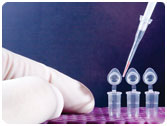History of DNA Testing
 DNA testing is a powerful tool for identification. With today's technology, DNA tests can now identify individuals with almost 100% certainty.
Identification has not always been this conclusive. Before DNA tests, the science community used other biological tools to identify people and determine relationships. These techniques, which included blood typing, serological testing, and HLA testing, were useful for other uses (such as matching blood and tissue donors with recipients and reducing the rejection rate for transplant patients), but they were not effective for identification and determining relationships.
With the introduction of DNA testing in the late 1970s and 1980s, scientists saw the powerful tool this process was for identification and determination of biological relationships. Thanks to the advent of DNA testing, we can now determine the identity of individuals and their relatives with exceptional accuracy and conclusiveness.
The following sections review the development of DNA testing from the early days of blood typing to the latest technology in DNA testing.
| The links below go to DDC's main website. Please use the Back button on your browser if you wish to come back to DDC's Government Contracts.
|
Introduction to DNA Testing History
1920s >> Blood Typing
1930s >> Serological Testing
1970s >> HLA Testing
1980s >> DNA Testing Using RFLP Technique
1990s >> DNA Testing Using PCR Technology
 |
|
 A History of DNA Testing
A History of DNA Testing
Check out this interactive review of DNA testing history, featuring milestones in DNA testing history and famous paternity cases.
MORE >>
|
 |
| |
|
